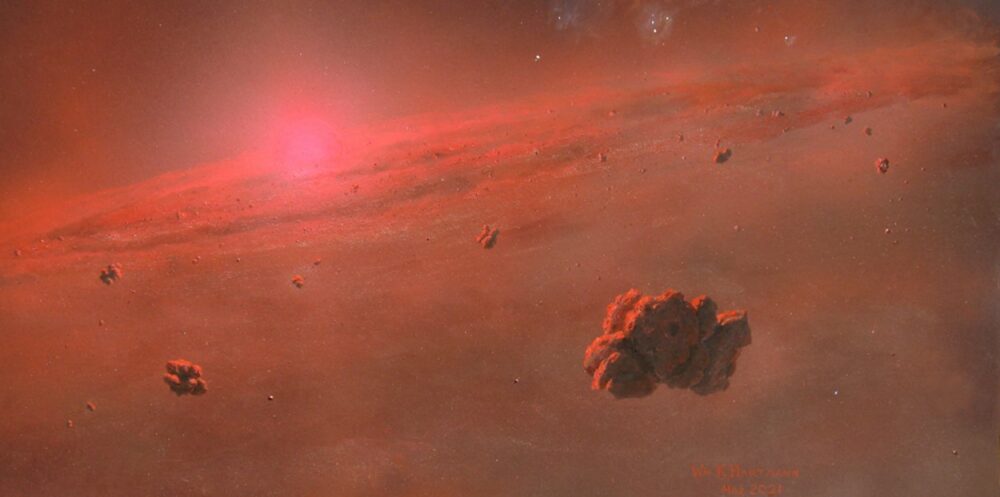Abstract
Accretion processes in protoplanetary disks produce a diversity of small bodies that contribute to the composition of planets and can survive as asteroids or comets. There is a predominant paradigm that small bodies played a crucial role in potentially multiple reshuffling events throughout the solar system and in both early and late accretion of terrestrial planets. Despite a high scientific attention paid to these bodies, their early evolution is not well understood, in particular, the timescales of accretion and thermal processes at different heliocentric distances, as well as the nature of planetesimal populations that produced various groups of present planetary objects.
In the last few years, both meteorite analyses and space missions have produced fascinating new data. The JAXA spacecraft Hayabusa2 at the near-Earth asteroid (NEA) Ryugu has revealed a top-shaped rubble-pile object made of hydrated materials similar to carbonaceous chondrites (CC) in their spectral appearance. Similar observations have been made with the NEA Bennu by the NASA mission OSIRIS-REx, raising urgent questions about the nature of these rubble-pile NEA parent bodies. From nucleosynthetic isotopic anomalies, a dichotomy is observed between non-carbonaceous (NC) and carbonaceous (C) meteorites formed within two genetically distinct reservoirs initially located either inside (NC) or outside (C) the orbit of Jupiter that remained isolated for several million years. These isotopic fingerprints can be further combined with precise chronology of meteorite parent bodies and of C-like NEAs to constrain dynamical processes in the early solar system, such as the timescale of Jupiter’s growth, inward scattering of C bodies, their incorporation into the growing terrestrial planets, and delivery of highly volatile species to Earth. By revealing Ryugu’s nature, its relationship to meteorites, and the NEA composition, the data available from the analysis of samples returned by Hayabusa2 will provide a powerful boost to the discussion of above cosmochemical topics.
 The concept of our team is to bring together European, Japanese, Chinese, and US experts on meteorite chronology, parent body thermal evolution, early solar system disk evolution and planetary object populations. In parallel to meteorite analyses, latest sample return missions to NEAs (Hayabusa1&2, OSIRIS-REx), and space missions to small bodies underway (DESTINY+, Lucy, Psyche), modelers have developed new numerical tools that are able to properly treat asteroids and meteorite parent bodies, as well as the dynamical evolution of the early solar system. By combining our expertise, we aim to address the chronology of meteorite parent bodies and NEA samples by improving age measurement techniques, conducting concerted lab analyses on precious materials, and applying advanced numerical tools that will fit the thermo-chronological data available and acquired. This work will lead to a new understanding of the timescales of accretion and parent body processes at different heliocentric distances in the early solar system, as well as of the planetesimal populations that produced various groups of planetary bodies (e.g., NEAs, C chondrite parent bodies, etc.).
The concept of our team is to bring together European, Japanese, Chinese, and US experts on meteorite chronology, parent body thermal evolution, early solar system disk evolution and planetary object populations. In parallel to meteorite analyses, latest sample return missions to NEAs (Hayabusa1&2, OSIRIS-REx), and space missions to small bodies underway (DESTINY+, Lucy, Psyche), modelers have developed new numerical tools that are able to properly treat asteroids and meteorite parent bodies, as well as the dynamical evolution of the early solar system. By combining our expertise, we aim to address the chronology of meteorite parent bodies and NEA samples by improving age measurement techniques, conducting concerted lab analyses on precious materials, and applying advanced numerical tools that will fit the thermo-chronological data available and acquired. This work will lead to a new understanding of the timescales of accretion and parent body processes at different heliocentric distances in the early solar system, as well as of the planetesimal populations that produced various groups of planetary bodies (e.g., NEAs, C chondrite parent bodies, etc.).

